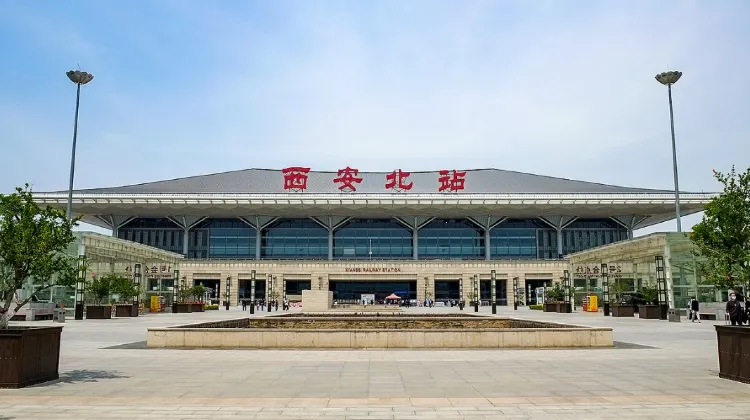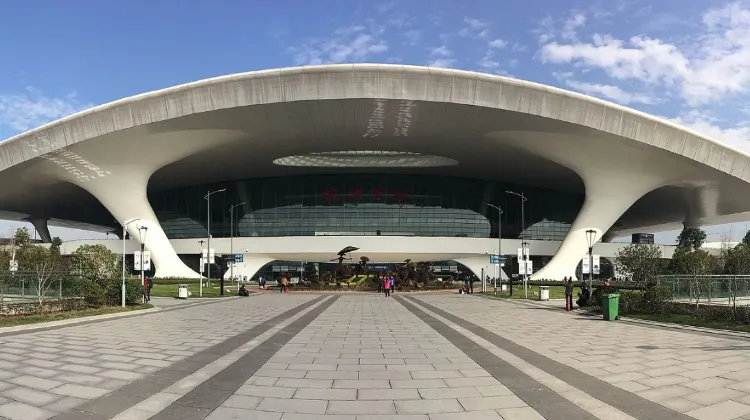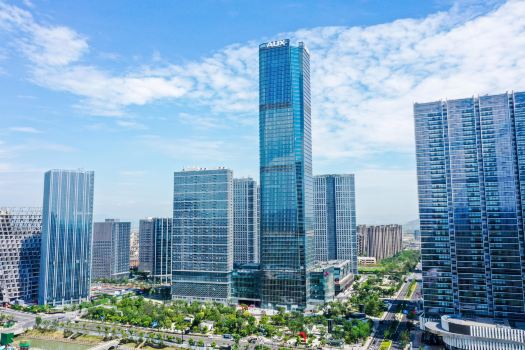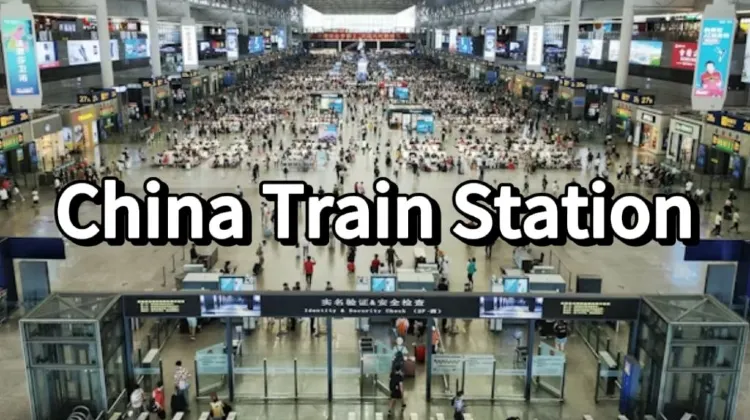
Welcome to my blog, your best guide on China train stations! I discuss about the layouts and services of various China train stations, how to board trains, and insights into the most frequently used and popular stations. If you plan to visit China, you must read this! 👀
🔥Exclusive China Train Coupon: Get 3% OFF Now!
Book your China train tickets as a new user on Trip.com and enjoy a special 3% Off 🎁! Use our exclusive coupon to save big on your first train journey!!!👀
✨Popular China Bullet Train Routes✨
- DepartureShanghai Hongqiao
- ArrivalHangzhou East
- Duration~45m
- Price (2nd Class)From $8.00
- DepartureShanghai Hongqiao
- ArrivalBeijing South
- Duration~6h
- Price (2nd Class)From $79.40
- DepartureShanghai Hongqiao
- ArrivalShenzhen North
- Duration~7h
- Price (2nd Class)From $81.46
Facilities & Service in China train station
China Train Station Toilets (Source from Xiaohongshu)
Facilities at China Train Stations
| Facility | Description |
| Drinking Water | Boiled water dispensers are positioned near waiting areas. Remember, tap water is not drinkable. |
| Business Class Lounges | Lounges offer a quiet space with snacks and direct platform access for business class ticket holders. |
| Seating | Waiting halls provide numerous seats, some with cushioning for added comfort. |
| Nursing Rooms | Dedicated areas for mothers and infants are available in larger stations. |
| Toilets | Facilities include both squat and Western-style toilets. Passengers should bring their own toilet paper. |
| Charging Stations | Stations include charging points equipped with USB cables for mobile devices. |
| LED Screens | Display crucial train details like departure times and platform numbers in both Chinese and English. |
| Elevators | Elevators facilitate access for passengers with disabilities or those carrying heavy luggage to all station areas. |
Services at China Train Stations
| Service | Description |
| Ticket Services | Machines and counters for ticket purchases and collections are near station entrances. Passport holders must use staffed counters. |
| Baggage Services | Facilities for storing luggage and checking in oversized bags, with variable fees based on size or weight. |
| Inquiry Counters | Stations have counters where staff help passengers with queries. Some staff members speak English. |
| Porter Service | 'Red Cap' porters assist with luggage from the entrance to the train and vice versa, available for a fee. |
| Smoking Areas | Designated areas for smoking are set up near toilets in waiting areas. |
| Marketplaces | Stations have shops selling snacks, drinks, and souvenirs, generally at higher prices than outside. |
| Restaurants | Dining options include fast-food outlets and restaurants serving Chinese dishes, typically priced above external alternatives. |
China Train Station LED Screens (Source from Xiaohongshu)
Layout of China train station
Station Squares
The station squares are the main entry areas to the train stations and are built to manage big crowds. Here, passengers gather to get into the station hall. During busy seasons, these squares fill up with people lining up to go through security checks and enter the station.
China Train Station Squares (Source from Xiaohongshu)
Station Hall and Ticket Offices
Right by the entrance, the station hall includes ticket offices where passengers can buy or pick up tickets. There are machines that read Chinese ID cards for self-service, but there are also staffed counters for those who need help or don't have a Chinese ID. After getting their tickets, travelers use this area to find out where their waiting hall is and other train journey details.
China Train Station Ticket Offices (Source from Xiaohongshu)
Waiting Halls
The waiting halls are usually on the first or second floors. These are spaces where passengers wait until their train is ready to board. The design of these halls varies: some stations have one large hall while others have a few smaller ones.
China Train Station Waiting Halls (Source from Xiaohongshu)
Platforms
The train platforms are typically located on the ground floor, accessible from the waiting halls via passages and stairs. While some stations are equipped with escalators, not all have them. Each platform is clearly numbered, making it straightforward for passengers to locate the correct one for their train.
China Train Station Platforms (Source from Xiaohongshu)
Other Services
The subway access is usually under the platforms, making it easy for travelers to switch between long-distance trains and local metro services. Clear signs help people find their way to exits, bus stops, and parking areas, making it easier to move around the station.
China Train Station Signs (Source from Xiaohongshu)
Layout of Shanghai Hongqiao Railway Station
- Mezzanine of 2F: This level serves as a commercial and dining area featuring well-known chains like McDonald's, KFC, and Starbucks.
- 2F Level: The main entrance and taxi drop-off area are located here. You'll also find ticket offices, a departure lounge, and a business lounge.
- 1F Level: Home to the platforms and railway tracks, this floor includes lifts that connect to the departure hall.
- B1 Level: This basement level serves as the arrival area and includes stations for metro lines 2, 10, and 17. It features additional facilities like ticket offices, an exit, taxi pick-up areas, parking lots, and a bus station. A passage also connects to Terminal 2 of Hongqiao Airport.
Shanghai Hongqiao station layout map (Source from Chinaairlinetravel)
How to Catch a Train in China?
Ticket Gate between Waiting Hall and Platform (Source from Xiaohongshu)
1. Ticket Collection: Start at the station squares and collect your ticket from the automated machines.
2. Ticket Check: Proceed to the station hall entrance where there are multiple gates for ticket checks. Have your ID and ticket ready for verification.
3. Security Screening: Pass through luggage security to ensure safety.
4. Find Your Waiting Hall: Use the station's LED displays to locate the appropriate waiting hall.
5. Final Ticket Check: About 15 minutes before departure, check the ticket & ID at the gate between waiting hall and platform, then get into the right platform.
6. Board the Train: Follow your ticket details to find the right car and seat, and board your train.
How to Buy Train Tickets in China?
Buying train tickets in China is a straightforward process, especially with online apps like Trip.com. You can easily find a wide selection of train tickets, including those for high-speed rail. Trip.com allows you to book tickets for popular routes across the country from the comfort of your home or on the go.
Here are some popular train routes in China that you can book through Trip.com:
| Departure | Destination | Average Time | Distance | Details |
| Beijing | Shanghai | 4.5-6 hours | Approx. 1,318 km | |
| Beijing | Guangzhou | 8-10 hours | Approx. 2,298 km | |
| Shanghai | Kunming | 10-12 hours | Approx. 2,252 km | |
| Chengdu | Chongqing | 1.5-2 hours | Approx. 308 km |
💖If you're curious about how to buy China train tickets, check the following articles to learn more:
Frequently used China high speed railway stations
Generally, older train stations are strategically located in the urban centers, serving both conventional and a limited number of bullet trains. In contrast, newer stations tend to be situated on the outskirts of cities and are predominantly designed for high-speed services. In this section, we get to know some of the busiest high-speed railway stations in China. These stations are important for Chinese travelers because they connect large cities and popular tourist destinations with frequent train services.
| City | Stations | Details |
| Beijing | Beijing South, Beijing West, Beijing Railway Station | Beijing South is the busiest, with 383 daily high-speed trains. |
| Shanghai | Shanghai Hongqiao, Shanghai Railway Station | Shanghai Hongqiao is near the airport and sees 505 high-speed trains daily. |
| Guangzhou | Guangzhou South | A major hub in the south connecting to numerous cities. |
| Xi'an | Xi'an North | The main high-speed station in Xi'an connects to cities like Beijing and Shanghai. |
| Chengdu | Chengdu East, Chengdu, Chengdu South | Chengdu East is the main high-speed station among the three. |
| Hangzhou | Hangzhou East, Hangzhou South, Hangzhou, Yuhang | Hangzhou East is a key high speed train station near the famous West Lake. |
| Chongqing | Chongqing North, Chongqing West, Shapingba | Chongqing North is the most frequented for high-speed travel. |
| Guilin | Guilin, Guilin North, Guilin West | Guilin and Guilin North are central and serve many high-speed trains. |
| Huangshan | Huangshan, Huangshan North | Huangshan North, opened in 2015, specializes in high-speed trains. |
| Hong Kong | West Kowloon | The only high-speed station in Hong Kong, located in Tsim Sha Tsui. |
Popular China train stations
Shanghai Hongqiao Railway Station
Source from Wikipedia
Shanghai Hongqiao Railway Station, officially named 上海虹桥站 (Shànghǎi Hóngqiáo Zhàn) and listed as Shanghaihongqiao on train tickets, stands out as one of the largest railway stations in Asia. Located at 1500 Shengui Road, Minhang District, Shanghai, the station is conveniently situated just 500 meters west of Hongqiao Airport Terminal 2. It features 30 platforms, making it a major hub for high-speed rail in the region and an integral part of Shanghai's transportation network.
| Level | Description |
| B1 | Arrival level, metro lines 2, 10, 17, taxi pick-up, bus station, parking, link to Hongqiao Airport Terminal 2 |
| 1F | Platforms and tracks, lifts to the departure hall |
| 2F | Main entrance, ticket offices, departure lounge, business lounge |
| Mezzanine of 2F | Dining and commercial area with outlets like McDonald's, KFC, Starbucks |
【Popular Train Routes】
- To Beijing South: 37 G-series trains operate daily, with a travel time of approximately 5½ hours, costing 550 yuan for second class.
- To Suzhou: 38 G and D trains daily with the shortest journey taking about 23 minutes.
- To Hangzhou: Up to 23 G-trains daily with travel times around 1 hour.
- To Nanjing: About 60 G-trains run daily, taking roughly 70 to 90 minutes for a one-way trip.
✅Explore More in Shanghai
Beijing South Railway Station
Source from Wikipedia
Beijing South Railway Station, known in Chinese as 北京南站 (Běijīng Nán Zhàn) and on tickets as Beijingnan, is a prominent hub in China's high-speed rail network. Located at 12 Yongwai Avenue, Fengtai District, just 7 km southwest of the Forbidden City and 35 km from Beijing Capital International Airport, it boasts 13 platforms and 24 railway lines. This station is not only vital for east, south, and northeast bound high-speed trains but also serves as an architectural marvel, reminiscent of the iconic Hall of Prayer for Good Harvests, and is a gateway to many of China's key cities including Shanghai, Tianjin, and Hangzhou.
| Level | Description |
| 2F | Waiting hall, boarding gates, ticket office, restaurants |
| 1F | Platforms, transfer channels |
| -1F | Station lobby, ticket offices |
| -2F | Subway platforms |
【Popular Destinations】
- To Shanghai Hongqiao: About 37 daily G-series trains, travel time ~5 hours.
- To Tianjin: 80 daily C-series and G-series trains, travel time ~30-37 minutes.
- To Suzhou: Multiple G and D series trains, shortest travel time ~23 minutes.
- To Hangzhou: G-series trains take about 1 hour.
【from Beijing South Railway Station to Key Attraction】
| Destination | Transportation Option | Details |
| Forbidden City | Subway | Line 4 to Xidan, then Line 1 to Tian'anmen East, walk to Forbidden City (approx. 30 minutes) |
✅Explore More in Beijing
Xi'an North Railway Station
Source from Wikipedia
Xi'an North Railway Station, marked as Xī'ānběi Zhàn (西安北站) on tickets, serves exclusively high-speed trains and is the city's main bullet train hub. Located at Shangxin Road in the Weiyang District, the station is about 14 kilometers north of Xi'an's city center near the Bell Tower. It features 18 platforms and 34 rail lines, making it a central point for travel to and from Xi'an.
| Level | Description |
| B1 | Arrival hall, subway entrances and exits, ticket windows |
| 1F | Platforms, ticket offices, exits/entrances |
| 2F | Waiting hall, ticket office, commercial area |
| -2F | Subway platforms for Metro Line 2 |
【Popular Destinations 】
- To Beijing West Station: Around 14 G trains daily, travel time approximately 6 hours.
- To Pingyao Station: 7 D trains daily, travel time about 2h 45 mins.
- To Mount Hua (Huashan North Station): 17 D trains daily, travel time around 35 minutes.
- To Shanghai Station: One D train daily, travel time about 11 hours 15 minutes.
【from Xi'an North Railway Station to Key Locations】
| Destination | Transportation Option | Details |
| Bell Tower (Central Xi'an) | Taxi | Approx. 23 minutes, about 40 RMB |
| Terracotta Warriors Museum | Subway and Bus | Line 2 to North Street, then Tourism Bus 5, 306, or 914 to the Terracotta Army |
✅Explore More in Xi'an
Hangzhou East Railway Station
Source from Wikipedia
Hangzhou East Railway Station, also known as 杭州东站 (Hángzhōu Dōng Zhàn) on train tickets, is a major station located approximately 15 kilometers northeast of West Lake in Hangzhou. With its expansive area of 400,000 square meters, it efficiently serves nearly 100 million passengers annually. The station is renowned for its architecture inspired by the "Tide of Qiantang River," enhancing its visual appeal and connection to local culture.
| Level | Description |
| Bottom Floor | Subway platforms, parking lot, ATM, inquiries |
| -1 Floor | Ticket windows, taxi stands, subway entrances/exits, shops, restaurants |
| 1st Floor | Platforms, ticket offices, exits/entrances |
| 2nd Floor | Waiting room, ticket offices, information desk, left luggage, restaurants, taxi drop-off area |
【Popular Destinations】
- To Beijing South Station: 20 G-trains daily, travel time around 6 hours.
- To Shanghai Hongqiao Station: 140 bullet trains daily, travel time about 1 hour.
- To Yiwu Station: 64 bullet trains daily, ideal for accessing Yiwu's commodity market, with a 35-minute journey.
【from Hangzhou East Railway Station to Key Attractions】
Below is a table about transportation options from Hangzhou East Railway Station to famous landmarks in Hangzhou.
| Destination | Transportation Option | Details |
| West Lake | Taxi | Approx. 23 minutes, around 34 RMB |
| Metro | Line 1 to Dingan Road Station, exit via C (42 minutes, 4 RMB) | |
| Bus | Bus 31 to Qianwang Memorial Temple, then walk (65 minutes, 2 RMB) | |
| Wulin Square (downtown) | Taxi | Approx. 40 minutes, around 100 RMB |
| Metro | Line 1 to Wulin Square Station (30 minutes, 3 RMB) |
List of China Train Station
We've made a full list of major Chinese railway stations, organized alphabetically. There are over 5,500 China train stations across an extensive rail network spanning 159,000 kilometers. About 500 stations run high-speed G-trains, and 600 stations have D-trains. Let's take a look at all of them!
| Letter | City | Railway Station | Letter | City | Railway Station |
| A | Anqing | Anqing Railway Station | L | Lianyungang | Lianyungang Railway Station |
| B | Badaling | Badaling Great Wall Railway Station | Lijiang | Lijiang Railway Station | |
| Beijing | Beijing Railway Station | Luoyang | Luoyang Longmen Railway Station | ||
| Beijing North Railway Station | M | Meilan | Haikou Meilan Airport Railway Station | ||
| Beijing Qinghe Railway Station | N | Nanchang | Nanchang Railway Station | ||
| Beijing West Railway Station | Nanchang West Railway Station | ||||
| Beijing Chaoyang Railway Station | Nanjing | Nanjing Railway Station | |||
| Beijing Fengtai Railway Station | Nanning | Nanning Railway Station | |||
| Beihai | Beihai Railway Station | Nanning East Railway Station | |||
| C | Changbai | Changbaishan Railway Station | Nantong | Nantong Railway Station | |
| Changchun | Changchun Railway Station | Nantong West Railway Station | |||
| Changchun West Railway Station | N | Ningbo | Ningbo Railway Station | ||
| Changzhou | Changzhou Railway Station | P | Pingyao | Pingyao Gucheng Railway Station | |
| Changzhou North Railway Station | Q | Qingdao | Qingdao Railway Station | ||
| Chaoshan | Chaoshan Railway Station | Qingdao North Railway Station | |||
| Chengdu | Chengdu South Railway Station | Quanzhou | Quanzhou Railway Station | ||
| Chongqing | Chongqing North Railway Station | Quzhou | Quzhou Railway Station | ||
| Chongqing West Railway Station | S | Sanya | Sanya Railway Station | ||
| D | Dali | Dali Railway Station | Shanghai | Shanghai Railway Station | |
| Dalian | Dalian Railway Station | Shanghai South Railway Station | |||
| Dalian North Railway Station | Shangri-La | Shangri-La Station | |||
| Datong | Datong South Railway Station | Shantou | Shantou Railway Station | ||
| Dongguan | Dongguan Railway Station | Shanwei | Shanwei Railway Station | ||
| Dongguan South Railway Station | Shenyang | Shenyang Railway Station | |||
| E | Emeishan | Emeishan Railway Station | Shenyang North Railway Station | ||
| F | Fenghuang | Fenghuang Ancient Town Railway Station | Shenzhen | Shenzhen Railway Station | |
| Foshan | Foshan West Railway Station | Shenzhen Futian Railway Station | |||
| Fuzhou | Fuzhou Railway Station | Shijiazhuang | Shijiazhuang Railway Station | ||
| Fuzhou South Railway Station | Shigatse | Shigatse Railway Station | |||
| G | Guangzhou | Guangzhou Railway Station | Suzhou | Suzhou Railway Station | |
| Guangzhou East Railway Station | Suzhou North Railway Station | ||||
| Guangzhou North Railway Station | T | TaiAn | TaiAn Railway Station | ||
| Guangzhou Baiyun Railway Station | Taiyuan | Taiyuan South Railway Station | |||
| Guilin | Guilin Railway Station | Taizhou | Taizhou Railway |
12306 vs. Trip.com
When booking train tickets in China, travelers can choose between 12306, the official site of China Railway Corporation, and Trip.com, a reliable international travel agency. While 12306 allows users to book directly, it often experiences technical issues and offers support only in Chinese during limited hours. Conversely, Trip.com provides a user-friendly interface, multilingual 24/7 customer support, and accepts various payment methods, making it cheaper and more accessible for international travelers.
| Feature | 12306 | Trip.com |
| Booking Source | Official China Railway website | Best International travel agency |
| Additional Fees | No extra fees | Possible extra fees |
| Service Hours | 5 AM to 1 AM (11:30 PM on Thursdays) | 24/7 |
| Website Reliability | Occasional errors and crashes | Stable and user-friendly |
| Customer Service | Chinese only, limited hours | Multilingual, available 24/7 |
| Payment Options | Limited to local methods | International credit cards, AliPay, WeChat Pay |
| Additional Services | None | Hotels, flights, tours |
FAQs about China Train Station
How many train stations does China have?
China has over 5,500 train stations, serving both its extensive high-speed network and traditional rail services.What is the newest train station in China?
One of the newest train stations in China is the Beijing Fengtai Railway Station, which was reopened in 2022 after reconstruction. It is now one of the largest railway stations in Asia.Are trains cheap in China?
Train travel in China can be quite affordable, especially if you opt for the slower conventional trains or second-class seats on high-speed trains. Prices vary widely depending on the type of train and distance traveled, but overall, trains offer a cost-effective way to see the country compared to other forms of transportation like flying.


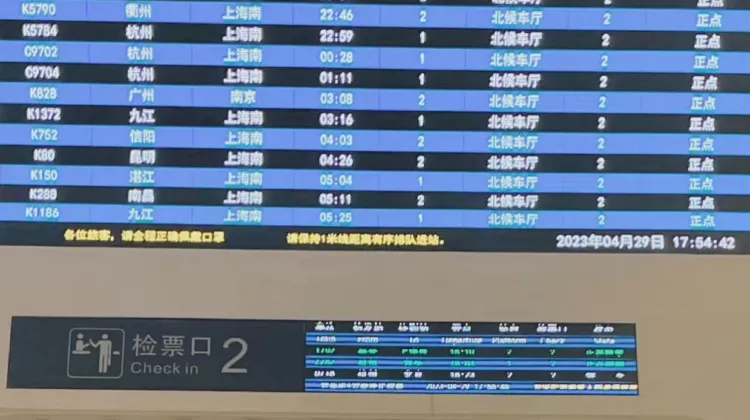

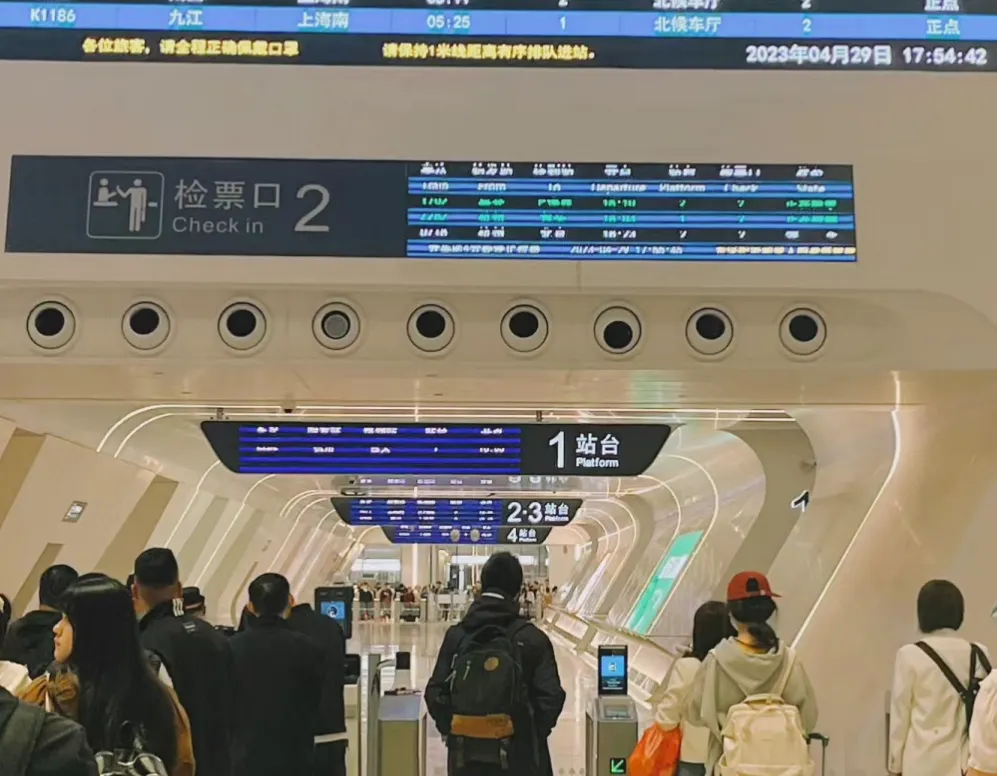



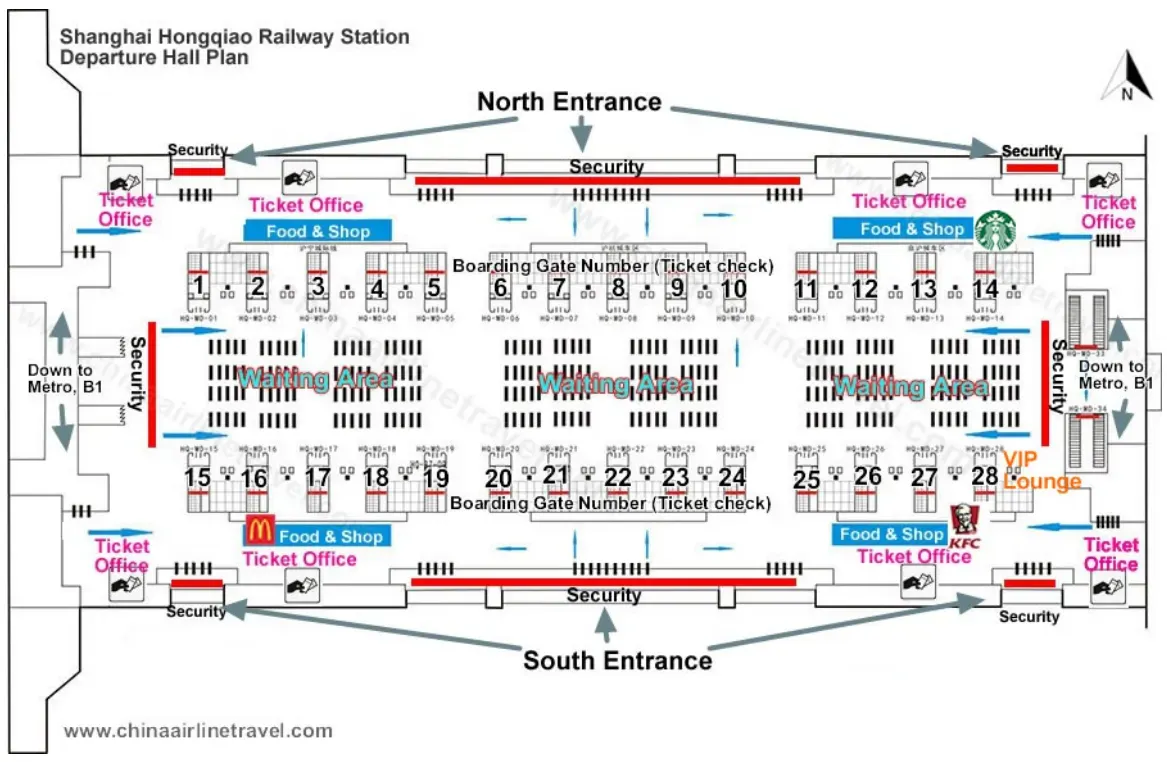
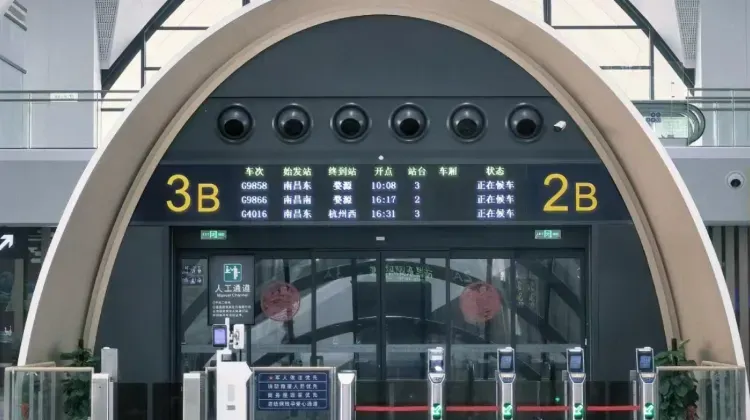
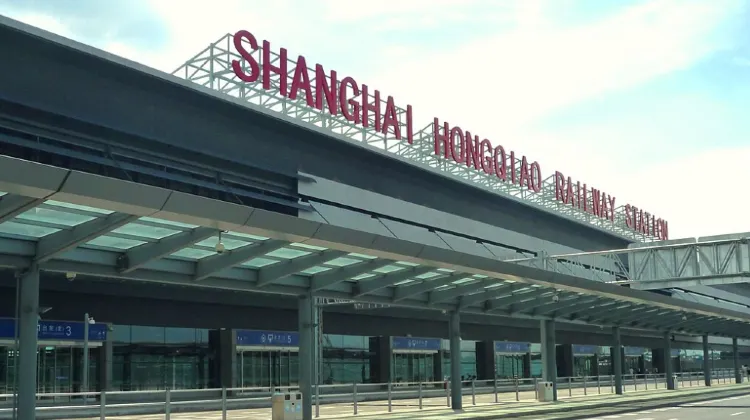
 NO.1
NO.1













